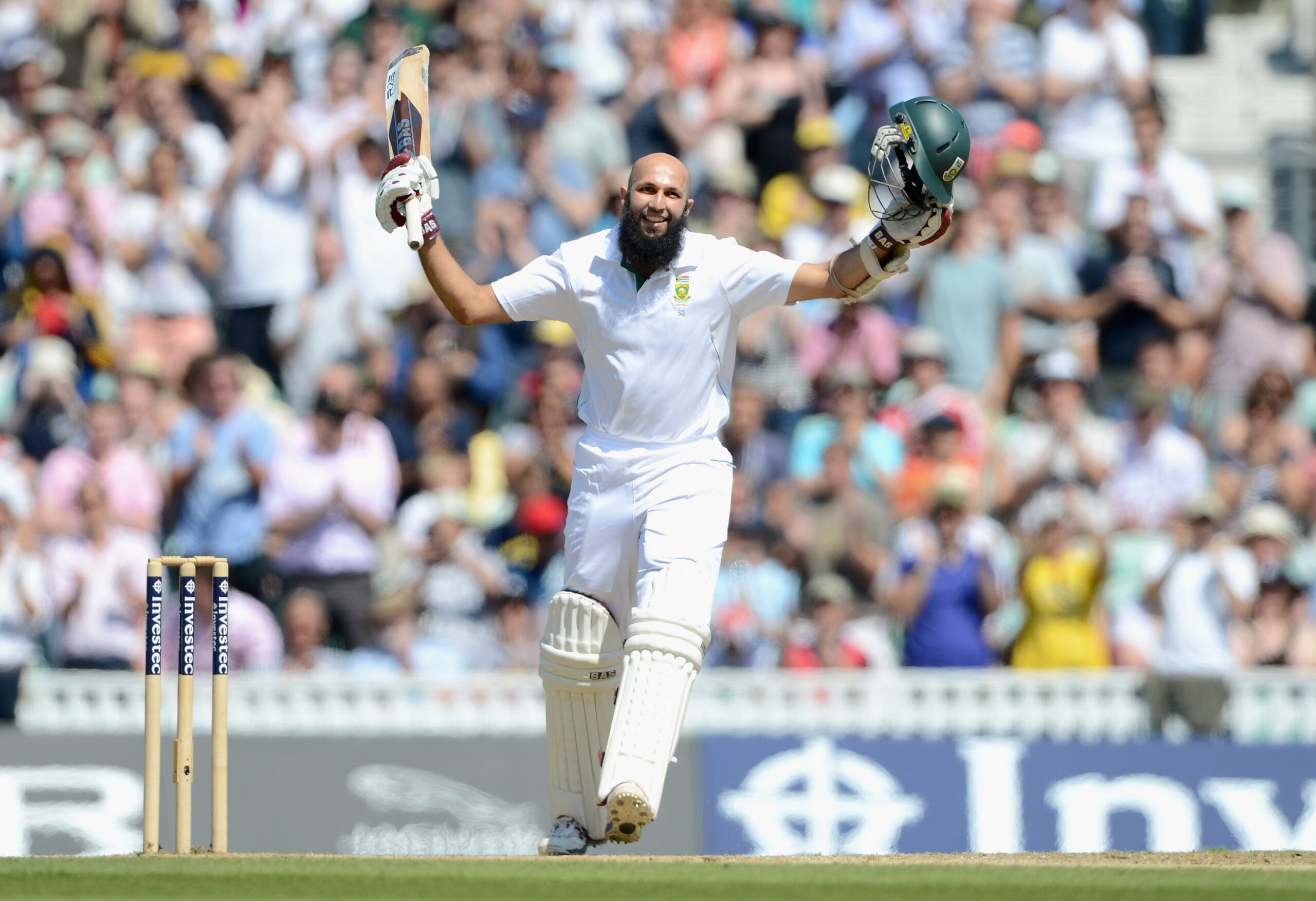Test matches are marathons rather than sprints and by day four the drama is often coming to a peak. Richard Spiller looks back to some notable occasions at the Kia Oval.
1926
England had been under the pump ever since cricket resumed after the First World War, Australia winning all three series easily but finding stiffer resistance in 1926, when the teams reached The Oval all square.
The hosts were so intent on victory that they introduced a new captain – the cavalier Percy Chapman – and brought back 48-year-old left-arm spinner Wilfred Rhodes. A match, which would be played to a finish, reached day four with England having conceded a deficit of 22 on first innings and been indebted to Surrey’s Jack Hobbs. He took the lead in making 100 out of 172 with opening partner Herbert Sutcliffe (161), negotiating a hazardous rain-affected pitch on the third morning to reach 436 all out.
Needing 415 for victory and witnessed by an enormous crowd, Australia’s batting – regarded as all but impregnable – began to melt away, losing two early wickets to pacer Harold Larwood. Rhodes had claimed two victims in the first innings and now showed why the selectors had such faith in him, cutting through Australia with 4-44. Wicketkeeper Bert Oldfield was the highest scorer with 23 out of 125 and just after 6pm George Geary had the privilege of taking the final wicket, Wisden Cricketers’ Almanack reporting that “the old, regained possession of the mythical ashes”.

1953
The “Test to end all Tests” predicted the Sydney Morning Herald as England and Australia headed to The Oval after four draws in 1953.
The tourists no longer had Don Bradman to score his runs at terrifying speed but they had been in possession of the urn for 19 years and might have retained it again but for their hosts escaping defeat at Lord’s and Headingley. Six days would be allotted to this match but never looked like being needed. Australia completed a clean sweep of winning the toss but could only reach 275 – Surrey’s Alec Bedser taking 3-88 and Fred Trueman, on leave from national service, collecting 4-86 – before skipper Len Hutton (82) and Trevor Bailey (64) eked out a lead 31.
The match turned in the second innings when Surrey’s spin duo Tony Lock (5-45) and Jim Laker (4-75) rushed through the Australians, Ron Archer’s 49 their modest best as they slid to 162 all out.
England needed 132 but lost Hutton before the close to be 38-1 on the third evening. Game over? Not at all, Ray Lindwall and Keith Miller leading the attack and Bill Johnston’s left-arm spin a threat. The ground was full to teeming, millions following on television and radio, as every run had to be sculpted out. Bill Edrich (55no) was assisted by Surrey’s Peter May (37) in adding 64 and lunch came with 31 still required.
It was only when a handful were needed that Lindsay Hassett relaxed the pressure, first bowling himself for an over and then Arthur Morris. His fifth ball was swept to the boundary by Denis Compton, Brian Johnson hailing the moment on BBC with “Is it the Ashes? Yes! England have won the Ashes!”
The crowd gathered in front of the pavilion to hear speeches from Hassett and Hutton, cricket playing its part in the glories of coronation year.

1966
Such was the all-round supremacy of Garry Sobers and his West Indies team that no one was taking anything for granted at the start of the fourth day of the final Test in 1966.
That was not surprising. They were 3-0 up, England being on their third captain and having made five changes following defeat by an innings at Headingley but showing a new resilience under Brian Close. Having dismissed the tourists for 268, they had slid to 166-7 only for a glorious 217-run stand between Tom Graveney (165) and wicketkeeper John Murray (112), followed by Ken Higgs (63) and John Snow (59no) putting on 128 for the final wicket to finish 527 all out.
West Indies slid to 135-4 by the close but there was still Sobers to come, having scored 722 runs at a Bradmanesque 103 and taken 20 wickets over the previous four Tests.
He had already rescued his side from impending defeat at Lord’s and a huge crowd did not long to wait long to see if he could do it again, David Holford being run out with just two runs added.
Close had a plan for Sobers, carefully setting the field with fast bowler Snow, who had been among those dropped until John Price pulled out injured.
His first delivery was short and Sobers went to hook only to see Close at short leg grab the ball, to a gasp and then cheers of the crowd.
West Indies were dismissed 15 minutes after lunch for 225, losing by an innings and 34 runs, described by Wisden as “a great triumph after so many humiliations during the summer”. England had still lost the series but under Close showed that English cricket wasn’t in such a bad state after all.

2005
Decent weather is an essential component of a day at cricket – but England supporters were cheering on the rain in 2005. Another long period of domination by Australia looked like ending when the series reached The Oval with Michael Vaughan’s men 2-1 up. But Ricky Ponting’s side – with Glenn McGrath, Shane Warne et al – were not going to give up the urn easily.
England had nervily made their way to 373 all out but with showers – and some longer downpours – dogging their progress, Australia were 277-2 by the end of day three, poised for a big lead before turning the squeeze on their hosts again.
It was time for Andrew Flintoff to earn what Wisden described as “his place in Ashes legend”. England were helped by cloudy skies and marginal light but Australia could not afford to go off. Vaughan entrusted the pavilion end to Flintoff and the big Lancastrian refused to hand back the ball until the job was done.
He chipped away throughout the morning session in a spell of 14.2 overs, Australia’s potential lead shrinking all the time until the realisation that they weren’t going to get one. At the other end Matthew Hoggard performed nobly and gained his reward by finishing off the innings with 4-4 in 19 balls, Australia losing their last seven wickets for 44 to be all out for 367 and conceding a lead of six.
England still had to bat again, soon losing first innings centurion Andrew Strauss for a single. But the murk was getting worse and without floodlights the umpires were constantly checking their meters. Ponting’s Australians were all wearing sunglasses to make a point, backed up by fellow countrymen unveiling Hawaiian shirts. English spectators waved umbrellas to encourage the rain clouds and cheered with delight when play was abandoned for the day at 34-1.
It would still need an epic century from Kevin Pietersen to secure the urn on day five but those brollies certainly helped.

2009
England had a very different task four years on but with the same aim – winning back the Ashes. After the joy of 2005 came Australia’s revenge in 2006-07 as Shane Warne, Glenn McGrath and company whitewashed England.
Ricky Ponting was still in charge in 2009 and his side, having been held off in Cardiff were soundly beaten at Lord’s only to square the series two Tests later at Headingley. So this time England, now led by Andrew Strauss, had to win. Any rain would be their enemy, not friend.
By the time it came to day four, the match was boiling up nicely, a seemingly indifferent 332 by the hosts put into perspective as Stuart Broad (5-37) and off-spinner Graeme Swann (4-38) tore through the Australians for 160. Jonathan Trott’s 119 on debut then extended the lead to 545 before Strauss declared at 373-9, leaving his opponents more than two days to make the runs.
They were 80-0 overnight, losing the openers within the first five overs, only for Michael Hussey and Ponting to cruise along to 217. Could they really do it? Time was no problem and England looked short of ideas, Andrew Flintoff no longer the force of four years earlier and just days from retirement as he limped around on one knee. He wasn’t finished yet, though, Hussey attempting to steal a single to mid-on but Flintoff’s bullet-like throw running out Ponting for 66 and the Lancastrian’s celebration in every newspaper the next day.
Australia had complained about the pitch turning too much – they later admitted that picking a specialist spinner wasn’t very smart – and Swann claimed another four wickets to work his way through the middle-order. Hussey kept going but was running out of partners, Brad Haddin (34) helping him add 101 but finally succumbing to temptation and holing out to Strauss at deep midwicket.
It was the crucial breakthrough, pacer Steve Harmison immediately whipping out three tailenders. Hussey was still there, on 121, but even his resistance finally crumbled as he pushed Swann to Alastair Cook at short-leg and England had won by 197 runs, Ashes winners again, as the cheers peeled around the ground.

2012
Like a painting from an old master, sometimes you just have to sit back and admire the quality of an innings.
Hashim Amla’s mastery of England’s attack was complete when South Africa came to England in 2012. Andrew Strauss’s men had retained the Ashes in Australia in 2010-11 and followed it by beating India at home to become the number one rated side in the world. They still held that status when South Africa arrived, this time the series opening at the Kia Oval rather than ending there.
England’s 385 all out after winning the toss owed much to Alastair Cook’s 115 but that total soon looked inadequate while Graeme Smith (131) and Amla were adding 259 for the second wicket. And when Jacques Kallis joined Amla the agony just got greater for Strauss’s men, who had been used to getting their way.
By the start of day four it was 403-2 and South Africa weren’t going to let them off the hook. Amla echoed Pakistan’s Javed Miandad – who made 260 in 1987 – for unrelenting supremacy, expertly picking the gaps and avoiding the traps set for him. While Kallis relished his first century in England since 1998, his partner continued to make life hell for England, passing AB de Villiers’ 278 – his country’s highest score – with an airy push over cover and becoming the first South African to score a triple century in Tests.
Eventually Smith declared at 637-2, England’s bowlers dragging themselves off the field after 183 overs in an innings lasting 803 minutes, Amla having batted for 790 of them and hit 35 fours as he finished unbeaten on 311.
Not that there was much respite – they were 102-4 by the close, on their way to defeat by an innings and 12 runs. Strauss would retire at the end of the series.

2016
The Oval holds a special place in Pakistan hearts. It’s where they first beat England, in 1954, alongside other notable victories in 1992, both securing series victories. It was also the scene of an infamous walk-off in 2006 but they have returned since to win in 2010 and 2016.
The latter triumph came by an overwhelming 10 wickets, squaring the four-match series 2-2, Misbah Ul-Haq’s side producing a magnificent display against the background of having been unable to play in their home country for seven years.
Having won the first Test by 75 runs, they were soundly beaten in the next two, but dismissed England for 328 on the opening day of the final match despite Moeen Ali’s 108.
Younis Khan’s 218 was the foundation stone for Pakistan to respond with 542, Asad Shafiq (109) his chief ally, and England entering day four in trouble at 88-4.
Misbah’s men could have picked no better day to secure victory as it was Pakistan Independence Day and after some typically feisty resistance from Jonny Bairstow – cracking 81 – the tourists would not be deprived. Leg-spinner Yasir Shah caused England all manner of problems in claiming 5-71 from 29 overs, pacer Wahab Riaz’s two vital incisions removing Alastair Cook and Bairstow in a final total of 253.
That left Pakistan needing just 40, duly knocked off by openers Azhar Ali (30no) and Sami Aslam (12no), joining team-mates parading around the boundary with their national flag and led by the inspirational Misbah.

2018
Farewells of all kinds have come at The Oval, no surprise given the ground has so often staged the final Test of a summer. Few have gone as successfully, nor been so affectionate, as Alastair Cook’s in 2018.
No longer captain and feeling his game was in decline, at a relatively youthful 33, the Essex left-hander announced before that the match that his 161st, against India, would mark his departure from the international scene.
England had already won the series, Cook receiving a thunderous welcome when he walked out to bat on the opening morning and an equally generous ovation on the way back after making 71.
But there would be another opportunity, a total of 332 followed by India’s 292, so Cook was padded up and ready to go again on the third evening, entering the playing arena once more on 46no on the fourth morning.
First he passed the half-century mark and then on 76 leapfrogged Kumar Sangakkara to become the fifth highest run-scorer in Test history. Would he achieve what Jack Hobbs, Don Bradman and Viv Richards failed to do and go out with a century?
Just before lunch, Cook produced a characteristic dab for a single, a shot with which he had earned many thousands of his runs, only for Jasprit Bumrah to unleash a throw which shot way past the stumps and flew across the outfield, earning Cook his 33rd Test ton and a reception which halted play for almost five minutes.
The man who had claimed he had lost his edge had found the middle instead, going on to a fluent 147 before departing for one final affectionate ovation.
It was by no means all Cook either, his farewell knock overshadowing a typically perky century from his successor as captain, Joe Root, as England cantered to 423-8dec.
The drama wasn’t finished either, India – needing 464 to win – slumping to 2-3 as Jimmy Anderson ripped out Shikhar Dawan and Cheteshwar Pujara, drawing level with Glenn McGrath’s 563 wickets, and Stuart Broad had Virat Kohli caught behind.
Victory the next day would be anything but straightforward but no one who attended day four of this Test will forget it.










